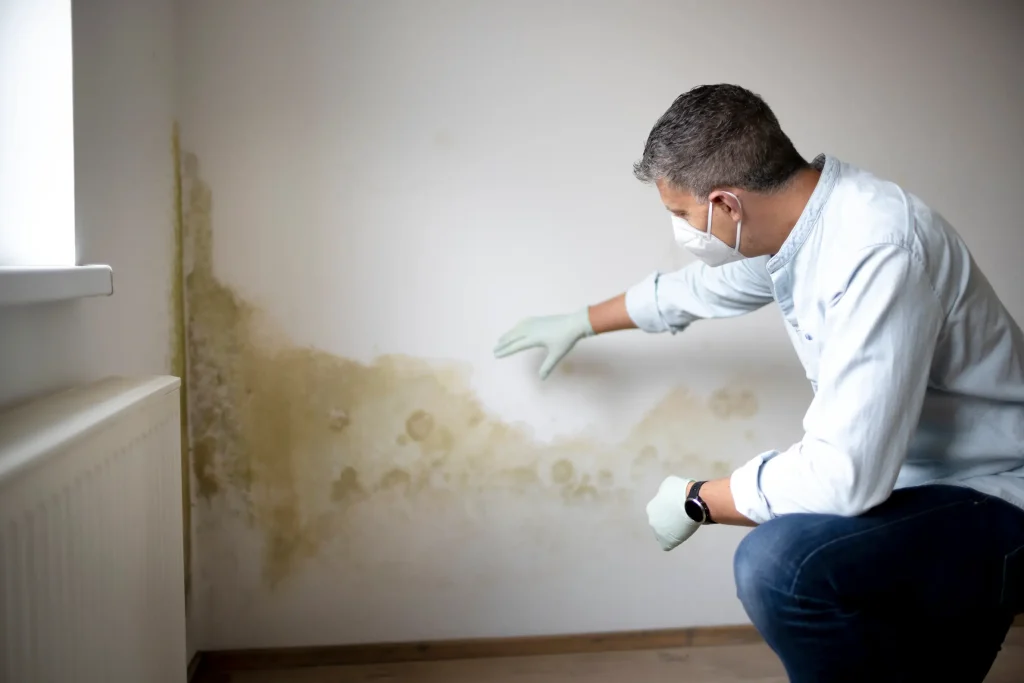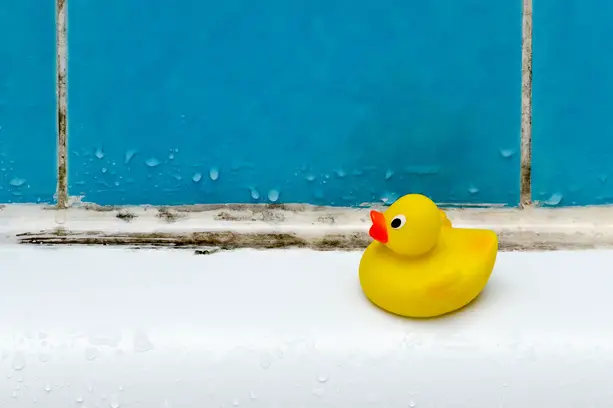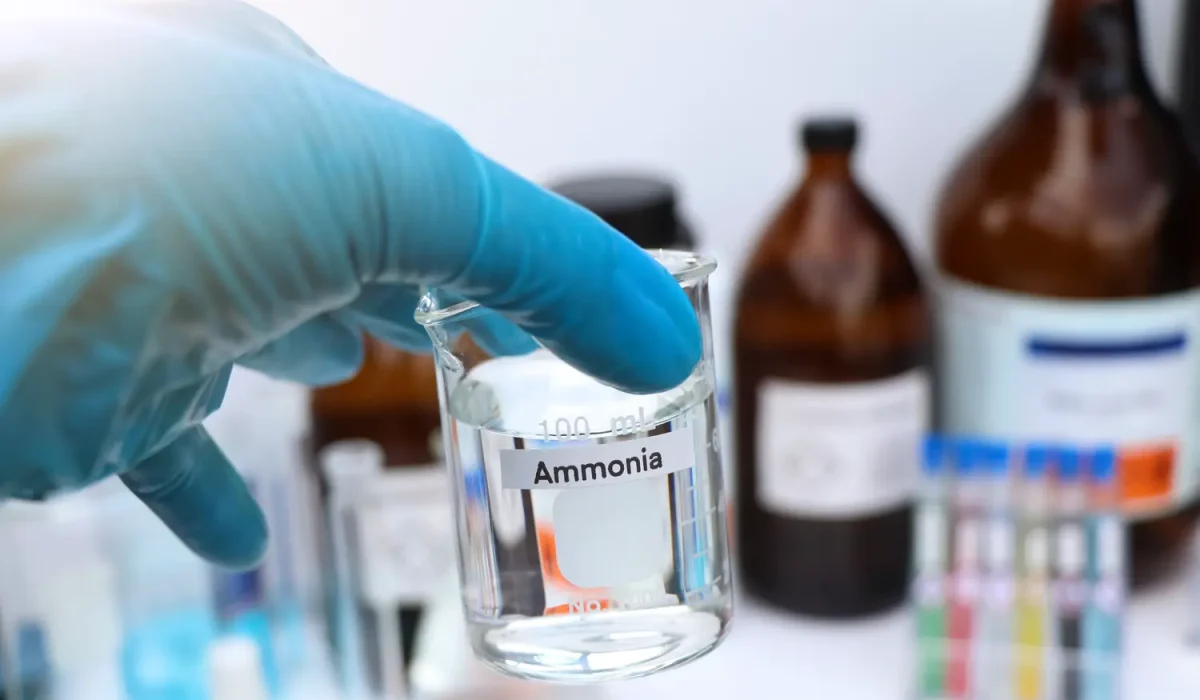Mold is a type of fungus that can grow pretty much anywhere providing a damp, warm, and humid environment. It reproduces by releasing spores into the air, which can be harmful to human health if inhaled in large quantities. It is a colorless gas with a characteristic pungent smell composed of nitrogen and hydrogen atoms, commonly found in household and industrial cleaners. Does ammonia kill mold? Learn in this blog the answer, plus how to be safe when using ammonia and other ways to take care of mold.
What is Ammonia?
Ammonia is widely used as a cleaning agent due to its ability to cut through tough grime and stains. It is also utilized in agriculture as a fertilizer, in the manufacture of plastics, explosives, textiles, pesticides, and other chemicals, and as a refrigerant.

Safety Precautions When Using Ammonia
While ammonia can kill mold on the surface, it is a strong chemical that can be hazardous if safety is neglected. Furthermore, when mixed with bleach, it produces dangerous gases called chloramines, so it must be used with caution. Closely follow these safety precautions to minimize risks:
- Ventilation: Ensure that the area where you are using ammonia is well-ventilated. Open windows and doors to allow fresh air to circulate and dissipate the fumes.
- Protective Gear: When using ammonia to kill mold, wear protective gear such as gloves, goggles, and a face mask or respirator to protect your skin, eyes, and respiratory system from irritation caused by ammonia fumes.
- Proper Clothing: Wear long sleeves and pants to prevent skin contact with ammonia, which can cause burns or irritation.
- Dilution: Always dilute ammonia with water according to the manufacturer’s instructions. Never use it at full strength unless specifically directed for certain applications.
- Never Mix Chemicals: Do not mix ammonia with bleach or other household cleaners. Mixing chemicals can create toxic gases like chloramines, which can be extremely dangerous when inhaled.
The Environment and Mold Removal Methods
The environmental impact of mold removal methods varies significantly based on the chemicals used and their potential to cause harm to ecosystems, water sources, and air quality. Here’s a comparison of common mold removal methods in terms of eco-friendliness:
Ammonia
While ammonia can kill mold, it is a potent chemical that can have negative effects on the environment. When released into waterways, it can be toxic to aquatic organisms. In the atmosphere, ammonia can contribute to the formation of particulate matter, which can affect air quality and respiratory health. It is not considered an eco-friendly option.
Bleach
Bleach (sodium hypochlorite) is effective at killing mold on non-porous surfaces but has several environmental drawbacks. It can release chlorine gas, which is harmful to the ozone layer. Additionally, when bleach makes its way into water systems, it can form toxic compounds that may harm wildlife and disrupt ecosystems. Bleach is also not biodegradable.
Hydrogen Peroxide
Hydrogen peroxide is a more environmentally friendly option compared to ammonia and bleach. It breaks down into water and oxygen, leaving no toxic residues. It is safe for use around plants and animals when properly diluted. However, in higher concentrations, it can still pose risks, so it should be used responsibly.
White Vinegar
White vinegar is one of the most eco-friendly mold removal options. It is a natural product that does not emit harmful fumes or leave behind toxic residues. Vinegar is biodegradable and poses minimal risk to the environment when used as a cleaning agent.
Baking Soda
Baking soda is another safe and eco-friendly method. It is non-toxic, does not produce harmful fumes, and is gentle on the environment. Baking soda can be used in combination with vinegar for a more effective treatment against mold.
Essential Oils
Some essential oils, such as tea tree oil, have been shown to have antifungal properties and can be used as natural mold remediation agents. They are generally safe for the environment when used in small quantities, but their production and distillation process can have a larger environmental footprint.
Borax
Borax is a natural mineral that can kill mold and inhibit its growth. It is less harmful than bleach and ammonia but should still be used cautiously as it can be toxic if ingested by pets or children. It does not emit fumes and is generally considered a low-impact option for the environment.
Potential Health Effects of Mold Exposure
Mold exposure can lead to a variety of health issues, particularly in individuals with allergies, asthma, or compromised immune systems. The potential health effects include:
- Respiratory problems such as wheezing, difficulty breathing, and chest tightness
- Allergic reactions including sneezing, runny nose, red eyes, and skin rash (dermatitis)
- Asthma attacks in people with asthma who are allergic to mold
- Irritation of the eyes, skin, nose, throat, and lungs even in non-allergic individuals
- Chronic lung illnesses or infections, especially in people with underlying lung conditions
In rare cases, exposure to certain types of toxic molds, such as Stachybotrys chartarum (black mold), can cause more severe health problems.
Symptoms of Mold Allergies
Symptoms of mold allergies are similar to other allergy symptoms and can include the following.
- Sneezing and runny or stuffy nose
- Itchy, watery eyes
- Dry, scaly skin
- Cough and postnasal drip
- Sore throat
- Sinus congestion and headaches
- Shortness of breath and wheezing
These symptoms can vary from mild to severe and may be worse in damp or moldy environments. It is a good idea to talk to a medical professional if these symptoms are present and contact a professional home inspection company for assistance.
Importance of Addressing Mold Infestations Promptly
It is crucial to address mold infestations promptly for several reasons:
- Health Risks: Prolonged exposure to mold increases the risk of developing respiratory and allergic symptoms.
- Spread: Mold can spread quickly through spores if not treated, leading to larger infestations.
- Property Damage: Mold can cause significant damage to building materials, furnishings, and personal belongings.
- Cost: The longer mold is left untreated, the more costly it can be to remediate.

Tips for Preventing Mold Growth
Preventing mold growth involves controlling moisture levels and ensuring proper ventilation. Here are some tips to help prevent mold in your home or workplace:
- Control Humidity: Keep indoor humidity levels below 60% using dehumidifiers or air conditioners.
- Ventilation: Ensure adequate ventilation, especially in areas like bathrooms and kitchens where moisture is common. Use exhaust fans when cooking or showering.
- Fix Leaks: Repair any leaks in roofs, walls, or plumbing promptly to prevent moisture accumulation.
- Dry Wet Areas: Clean and dry any wet areas within 24 to 48 hours to prevent mold growth.
- Proper Insulation: Insulate pipes, windows, and roofs to reduce condensation.
- Cleaning: Regularly clean and dust your home, as mold can grow on dust and dirt.
- Air Circulation: Improve air circulation by opening doors between rooms, moving furniture away from walls, and using fans if needed.
- Mold-Resistant Products: Use mold-resistant products like paints, building materials, and fabrics in areas prone to moisture.
- Outdoor Drainage: Ensure that the ground slopes away from your building’s foundation to prevent water from collecting around the structure.
- Regular Inspection: Routinely inspect your home for signs of mold and address them immediately.
Critical Key to Kill Mold
To effectively tackle the problem of mold in your home or workplace, it’s essential to start by identifying the source of moisture that is allowing the mold to thrive. Once identified, address this issue immediately to prevent future growth. Following that, cleaning small areas of mold can often be done with a mixture of household detergent and water, avoiding the use of bleach if possible since it doesn’t prevent mold from reoccurring and can pose health risks if not used properly.
For larger infestations or if mold is growing on porous surfaces, it may be necessary to discard the affected material completely. Always wear protective gear such as gloves, masks, and eye protection when handling moldy materials to protect your health.
Other Things to Know
Now that you know that ammonia kills mold, let’s take a look at some other areas of recommended maintenance. One of those is getting rid of mold in the basement. In order to do this, you will need to find the source and fix it. If it is a leaky window or pipe or whatever it is, it needs to be fixed and the area cleaned.
Another area is mold and its effects on health. Everyone is different when it comes to how mold affects them. It can cause headaches, trouble breathing, fever, rashes, or other symptoms. If these are issues you are having, you will want to talk to a mold specialist about getting the mold out of the home.
Lastly, many people wonder what mold smells like. Well, it smells like a musty odor with an earthy scent. Almost like a fresh pile of dirt. If you are smelling this, then it is a good idea to call in an expert inspection company to take a look to see if you have mold.
When to Contact a Professional
Consult a professional if the affected mold area is substantial (more than 10 square feet) or if you’re dealing with post-flood cleanup or contaminated water. If the HVAC system is compromised or the extent of mold is uncertain or handling it seems unsafe, you will want to contact a professional. Lastly, if occupants of the home have health issues that mold exposure could worsen, you will want to have a professional to the home. Professionals possess the necessary tools and knowledge to safely handle significant mold infestations and can help restore the air quality in your environment.
Conclusion
In essence, while ammonia can kill mold, it’s not usually the best option. Addressing mold promptly and effectively is crucial to maintaining a safe and healthy environment. While small mold problems can often be managed with simple cleaning solutions, larger infestations require professional attention to ensure that they are dealt with thoroughly and safely.
Ultimately, the key to mold control is moisture control and professional maintenance. For guidance on mold growth or to schedule a complete home inspection, reach out to Edifice Inspections in Peachtree Corners, GA for a mold inspection.


1 Comment
Comments are closed.